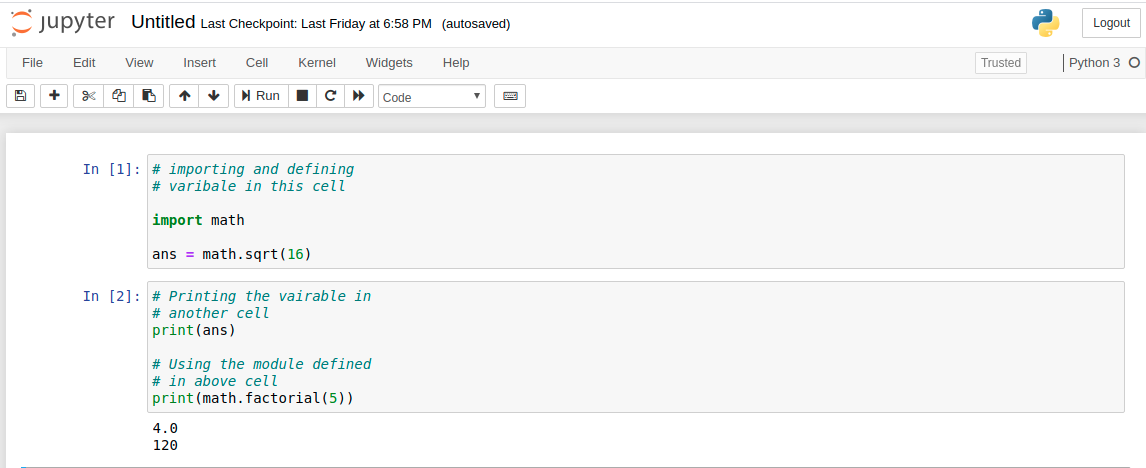

Training (temporary) server based version. When installed on your computer, you canĪlways access the app even without internet access. Need an updated browser (the Jupyter programmers recommend Mozilla Firefox or GoogleĬhrome, but not Microsoft Explorer). The Jupyter Notebooks application is a browser-based application. This series will focus on using Jupyter Notebooks with Python,īut the information presented can apply to other languages as well. You may still find some references to iPython in materials Jupyter Notebooks now supports overĤ0 coding languages. Julia, Python, and R, which were the first languages outside Python that the JupyterĪpplication was designed for. The Jupyter Notebooks grew out of iPython.

To create documents that combine code in your language of choice, output and text. To share data processing, analysis and visualization outputs. We use markdown syntax in Notebook documents to document workflows and Simulation, statistical modeling, machine learning and much more." Uses include: data cleaning and transformation, numerical “The Jupyter Notebook is an open-source web application that allows you toĬreate and share documents that contain live code, equations, visualizations andĮxplanatory text. View Slideshow: Share, Publish & Archive - from the Reproducible Science Curriculum Jupyter Notebook Publish (disseminate) your code and code output. This week we will learn about the Jupyter Notebook as a tool to document and The four facets of reproducible science are: Describe two tools that enable ease of publishing code & output: Jupyter Notebooks.Explain why documenting and publishing one's code is important.At the end of this activity, you will be able to:


 0 kommentar(er)
0 kommentar(er)
